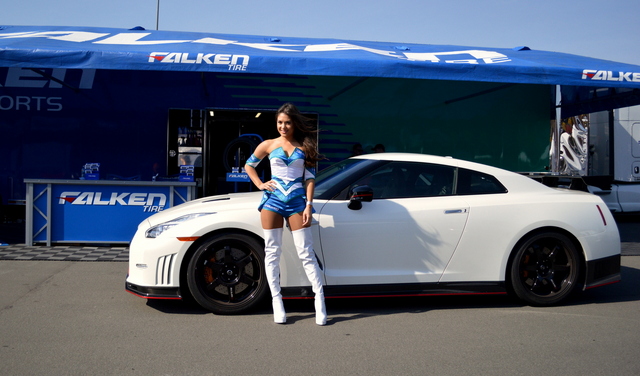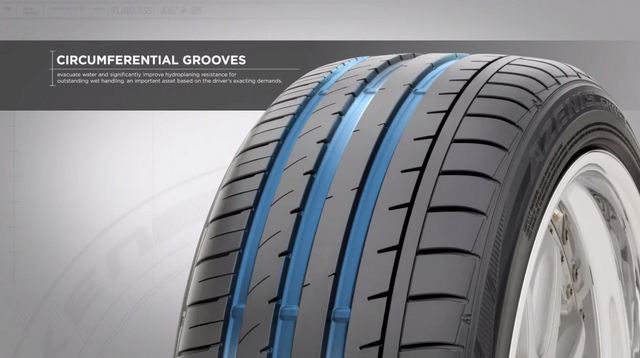Tire Review: Falken Azenis FK453

Tires are one of the most important and often overlooked components of a car, typically landing near the bottom of a list of to-do items. Few things come close to increasing safety and performance like a set of good tires, and when it was time to replace the OEM rubber on my 2006 Nissan 350Z, I gravitated to what many automotive enthusiasts claim to be the best brand on the market, Michelin.
For eight years, I’ve used the Michelin Pilot Sport series, first the PS2 and now the Super Sport. While these are the premier models for Michelin, I couldn’t fairly say that they are the best tires for me because I don’t have extensive experience with other brands.

To remedy my ignorance, I went with a set of Falken Azenis FK453 for my most recent tire change. The FK453 is the flagship summer performance model for the brand, and I chose it because I wanted a tire that derived its technology from racing experience. I’ve followed the Team Falken Tire Porsche 911 RSR through its various Le Mans class victories and was curious how much of the race-winning performance carried through to the company’s passenger car tires.
A staggered set of Azenis FK453s, 225/45/18 front and 245/45/18 rear, costs $602 which is much less expensive when compared to $931 for the same size Michelin Pilot Super Sports (pricing from Amazon.com as of June 8, 2015). Load, speed rating, treadwear, traction and temperature specifications are identical between the FK453 and Super Sport, placing them in the very competitive ultra high performance tire segment.
Using the Michelin Pilot Super Sport as a baseline, let’s take a closer look at how the Falken Azenis FK453 performs in daily use.

The 350Z was designed with minimal sound-deadening so tire and road noise have always been a major concern for me. The Azenis FK453 uses an asymmetric variable tread design to reduce high speed tire noise, and while I don’t have any sound measuring equipment, I did notice a quieter ride. After installing the Falkens, I find myself tuning the volume on the car stereo to only 75% of where it used to be for the same level of listening comfort. Sure, it’s highly unscientific, but there’s no doubt that the tires have had a positive effect on my in-car experience.
Now for the part that most enthusiasts are concerned with: grip levels. The FK453’s new silica enriched compound produces excellent grip in both dry and wet conditions. I get to test the tire’s dry handling everyday thanks to Los Angeles’s merging, small radius, 360 degree freeway on-ramps where there’s usually a large bump, dip or crack waiting to unsettle the car. Driving a two-seater RWD sports car, I’m pretty spirited on these circular on-ramps and the tires grip without complaint. When I suddenly increase throttle during one of these right-curving on-ramps, the tires stay their course, digging harder into the pavement; the more I push them, the more they perform. As far as traction levels are concerned, the FK453s are on par with the Super Sports.

On any type of surface, these tires are very comfortable and communicate plenty of feedback. The rigid carcass used on the inside helps with stability and handling, and its benefits can be best seen when the tire loses contact with the pavement after a sudden change in surface elevation. When the tire reconnects with the ground, it does so with a confident smoothness that doesn’t jostle the steering wheel. This lack of profile deformation also means the tire doesn’t hop or wobble during heavy braking, resulting in shorter stopping distances. Michelin uses a different technology to achieve similar results.

Wet weather handling is equally as confident with the three wide circumferential grooves quickly evacuating any standing water. Even with the current drought in California, I did manage to drive in the rain a few times and successfully executed emergency maneuvers during each occasion (California drivers are the worst when it rains). With hard braking and quick lane changes, these tires were the difference between a close-call and an accident. Feedback is close to that of dry conditions and I didn’t feel any hydroplaning or lack of grip like I did with the OEM tires. The Super Sports never had an issue with wet roads, although the FK453s offer more communication during heavy rain.
So is the Falken Azenis FK453 better than the Michelin Pilot Super Sport? From a pure performance perspective, I don’t have the talent or the means to push either tire to its upper limits to find out, but for how I use them and how most other drivers will use them—daily commuting and weekend spirited driving—they’re both on equal ground, with the Falkens offering slightly more confidence in extreme wet conditions. As far as ride quality, the FK453 comes out on top with less highway drone and more comfort. And there’s no questioning the economics when my set of Falkens cost $329 less than the Michelins. Factoring all of these aspects, my answer is yes, the Falken Azenis FK453 is the better tire for me.
The Azenis FK453 offers great performance, comfort and quality at an affordable price, and will be my tire of choice going forward. I’ll need to find a way to break the news to the Michelin Man, but I’m sure he’ll understand. Strong competition promotes greater innovation, and right now, Falken is leading the charge.
